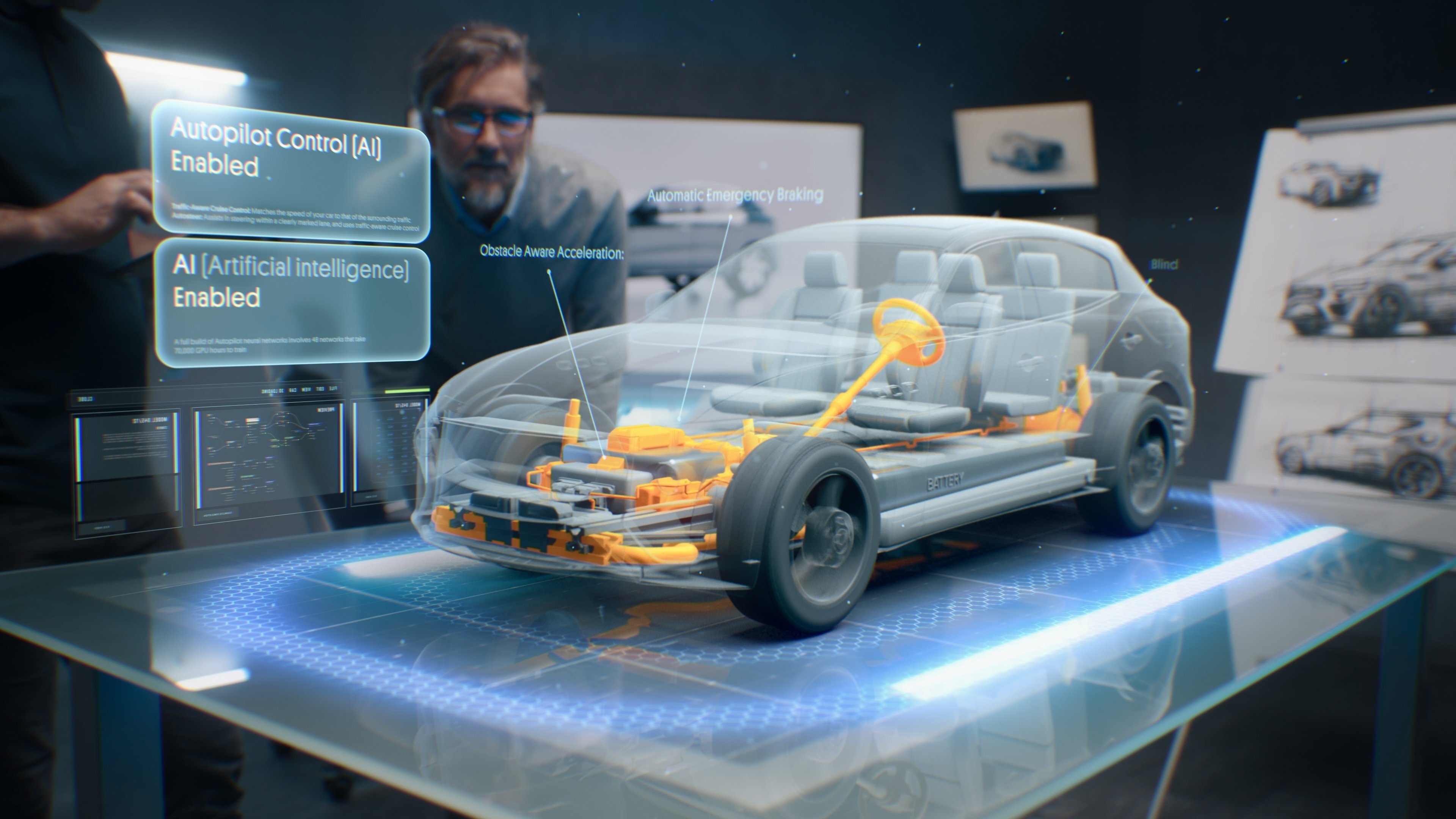
In recent years, AI's integration into the automotive sector has brought about a wave of advancements. From self-driving cars and advanced driver-assistance systems to enhanced manufacturing processes, the impact of AI on the automotive industry is nothing short of revolutionary.
Finding the answer to chip shortage
The automotive industry is grappling with chip shortages. Specifically, this shortage places immense pressure on manufacturers, resulting in a shortfall of around 3 million vehicles in 2023 [1]. One solution to this issue is to reduce the amount of NAND chip storage required within vehicles, which is the non-volatile flash memory commonly used in various electronic devices for storing data and software.
In automotive electronics and software updates, NAND chip storage plays a vital role by holding essential software components, configurations, and necessary data. This storage is organized into partitions within the memory, effectively managing different types of data and software. Specifically, using dual partitions in the endpoint memory of NAND chips is a common practice. However, the current approach of using dual partitions demands double the NAND chip memory and may potentially affect other Electronic Control Units (ECUs) within the vehicle. When an update fails, it could trigger a chain reaction and require rollbacks in other areas of the car, which may not always be feasible.
Therefore, AI-powered technology offers an innovative solution by providing differential updates. Instead of storing entire software packages for updates, AI algorithms analyze the differences (or "differentials") between the existing software version on the vehicle's NAND chip and the new version. AI then stores only these differentials rather than the entire update package, which can be significantly smaller.
Besides, AI also provides in-place updates. This method writes an executable update file to the next available space on the chip without erasing previous versions. This substantially decreases space requirements and allows manufacturers to revert to any previous software version without a second bank of flash memory.
AI can also optimize the storage of NAND flash memory by managing memory blocks and allocating them based on the software's usage patterns. Frequently accessed software components are stored in readily accessible memory blocks, while less-used elements are compressed. This adaptive memory management ensures storage space is used more efficiently, reducing the need for larger NAND chips in the automotive industry.
Ensuring drivers’ safety
One fundamental role that AI plays in enhancing driver experience is its ability to process data from an array of sensors, including cameras, LiDAR, and radar, to create a comprehensive view of a vehicle's surroundings. This capability can enhance safety by planning and adapting driving routes in real-time, steering clear of obstacles, and optimizing the driving experience.
Advanced Driver Assistance Systems (ADAS) utilize various technologies, including AI as one of the prominent applications. Through the incorporation of AI, ADAS can help drivers with lane-keeping assist, automatic emergency braking, adaptive cruise control, and parking assist. These systems rely on AI algorithms and sensor data to monitor the vehicle's environment, identify potential hazards, and aid drivers in achieving collision-free driving and parking. With a staggering 94% of all road traffic incidents caused by human error [2], regulatory bodies are taking action to enhance safety. The European Commission, for instance, has introduced new rules with specific ADAS requirements in all vehicles by 2024, requiring automakers to adopt the requisite software and technology to meet these standards [3].
Furthermore, AI extends its influence to Advanced Driver Monitoring systems, which can continuously assess driver behavior for signs of distraction or fatigue. These systems typically use a combination of sensors, including cameras, infrared sensors, and steering angle sensors. These sensors continuously collect data on the driver's actions and the vehicle's environment.
For example, AI can identify patterns such as erratic steering, frequent lane departures, long periods without any steering input, eye movements, facial expressions, and head movements. When necessary, these systems can issue visual and auditory warnings, or even take control to ensure the safety of all occupants. Thus, AI can redefine the driving experience, making it not only more convenient but also significantly safer.
Visioning the car of the future
AI can help manufacturers develop smarter cars. Using AI-powered simulations, companies can test designs virtually before making physical prototypes. By automatically generating 3D models of car components from 2D drawings, AI allows quicker design iterations. This can expedite the development cycle and result in fewer expenses and faster time-to-market. According to research, generative design can help reduce design time by up to 50% and cut material costs by 20% [4].
Additionally, AI can be used to detect and correct errors in design models. AI-powered vision systems can inspect parts and products with incredible precision, detecting even the slightest defects or inconsistencies. Machine learning algorithms are trained to recognize defects based on a large dataset, ensuring high accuracy in quality control. In an automotive manufacturing plant, AI-based vision systems inspect painted car bodies for imperfections such as scratches, dents, or color mismatches. Any faulty parts are automatically flagged for rework or removal, ensuring that only high-quality products reach the assembly line.
AI-powered analytics and insights enable automakers to track the performance of their vehicles in real-time, making it easier to anticipate potential issues. This ensures that any problems can be addressed quickly and prevents costly recalls. AI-driven predictive maintenance systems use sensors and data analytics to monitor the condition of machinery and equipment in real-time.
Driving the potential of AI
The future of the automotive industry appears promising, yet it's important to acknowledge that AI is an emerging technology. In fact, the AI market within the automotive industry was valued at USD 6 billion in 2022, and it is projected to experience a remarkable CAGR of 55% from 2023 to 2032 [5]. Thus, the automotive sector must utilize AI with great caution to fully unlock its potential.






























